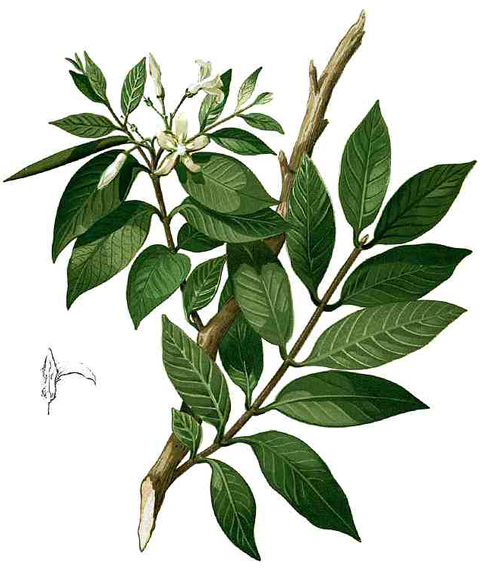
Family • Apocynaceae
Lanete
Wrightia pubescens R. Br.
PUBESCENT WRIGHTIA
Dao diao bi
| Scientific names | Local names |
| Wrightia pubescens R.Br. | Anantong (Zambales) |
| Accepted infraspecifics (3) | Lanete (Tag.) |
| Wrightia pubescens subsp. laniti (Blanco) Ngan | Laniti (Tag.) |
| Anasser laniti Blanco | Manlagosi (Mindoro) |
| Wrightia javanica A.DC. | Pubescent wrightia (Engl.) |
| Wrightia laniti (Blanco) Merr. | |
| Wrightia ovata A.DC. | |
| Wrightia tomentosa var. cochinchinensis Pierre ex Pit. | |
| Wrightia pubescens subsp. penicillata (F.M.Bailey) Ngan | |
| Wrightia pubescens var. penicillata F.M.Bailey | |
| Wrightia versicolor S.T.Blake | |
| Wrightia pubescens subsp. pubescens | |
| Nerium macrocarpum Span. Â Â Â Â Â Â | |
| Wrightia calycina A.DC. Â Â Â Â Â Â Â Â Â Â Â Â Â | |
| Wrightia multiflora Zipp. ex Span. | |
| Wrightia spanogheana Miq. | |
| Wrightia pubescens R.Br. is an accepted species. KEW: Plants of the World Online | |
| Laniti is a local common name shared by Wrightia pubescens (lanete) and Kickxia blancoi Rolfe (laniting-gubat) | |
| Other vernacular names |
| CHINESE: Dao diao bi, Dao bing, Ji mu, Jiu nong mu, Ru jiang shu, Zhi tong mu, Xi gu mu, Ku yang. |
| INDONESIAN: Mentaos, Bintaos, Benteli lalaki, Lalitin feto. |
| LAOS: Mouk. |
| MALAYSIA: Pulai tanah, Jeliti, Mentoh, Metih-metah. |
| SUNDANESE: Bintaos. |
| THAI: Mok, Moke, Mok man, Mukkuea. |
| VIETNAMESE: Th[uwf]ng m[uws]c l[oo]ng, Long muc long. |
Botany Distribution
Properties Availability |
|                         Abuse and Plagiarism of the Compilation on Philippine Medicinal Plants                                            Under the Guise of Fair Use |
Updated November 2025 / January 2020
February 2015
![]()
 |
PHOTOS / ILLUSTRATIONS |
| IMAGE SOURCE: Wrightia pubescens Brown - flowers and leaves / © Woraphot Bunkwamdi / Some rights reserved / Image modified / Click on photo or link to go to source image / iNaturalist |
| OTHER IMAGE SOURCE: /Wrightia pubescens - flowers close-up / Photographer: unkinown / Click on image or link to go to source page /Australian National Botanic Garden |
| OTHER IMAGE SOURCE: / illustration / Wrightia pubescens Blanco/ Plate from book / Flora de Filipinas / Francisco Manuel Blanco (OSA) / Public Domain / Wikipedia |
Additional
Sources and Suggested Readings |
• |
DOI: It is not uncommon for links on studies/sources to change. Copying and pasting the information on the search window or using the DOI (if available) will often redirect to the new link page. (Citing and Using a (DOI) Digital Object Identifier) |
| Â Â Â Â Â Â Â Â Â Â Â Â Â Â Â Â Â Â Â Â Â Â Â Â Â Â Â Â Â Â List of Understudied Philippine Medicinal Plants |
| Â Â Â Â Â Â Â Â Â Â Â Â Â Â Â Â Â Â Â Â Â New plant names needed The compilation now numbers over 1,730 medicinal plants. While I believe there are hundreds more that can be added to the collection, they are becoming more difficult to find. If you have a plant to suggest for inclusion, native or introduced, please email the info: scientific name (most helpful), local plant name (if known), any known folkloric medicinal use, and, if possible, a photo. Your help will be greatly appreciated. |
• |
 |


 Constituents
Constituents
